What’s In Your Shed?: No-till Hampshire farm reveals best and worst machines
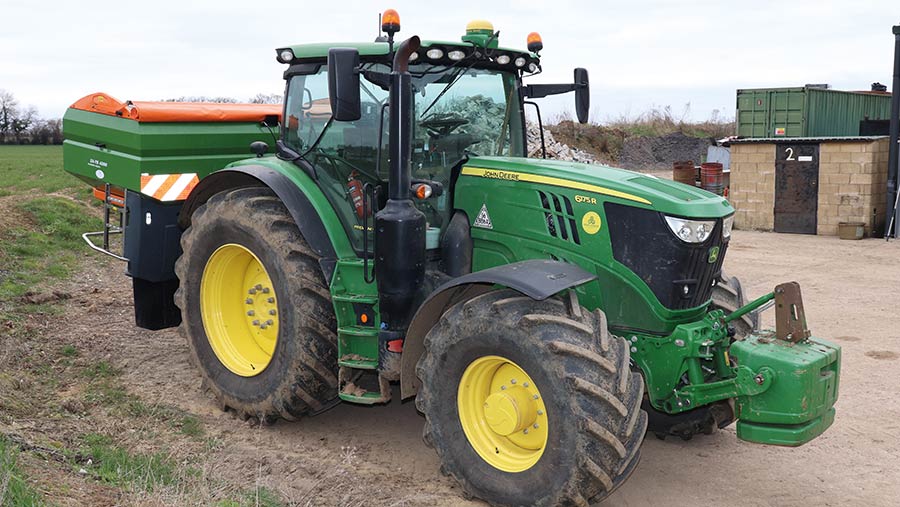 © Andrew Faulkner
© Andrew Faulkner A mix of owned and hired kit operates across 1,620ha of arable ground for Hampshire farmer Giles Porter and his father, Antony. Andrew Faulkner poses the questions.
Farm facts
GL Porter & Sons, Clare Park Farm, Crondall
- Farm size: 1,620ha of owned, contract-farmed, rented. Management consultancy own a further 365ha
- Cropping: Wheat, oilseed rape, winter beans, winter/spring barley, winter oats
- Stock: 400 Dorset ewes (September lambing)
- Soil type: From Hampshire chalk to clay cap with flints to gravelly loam
- Staff: Three full-time, five harvest casuals plus Giles and his father, Antony Porter
See also: How to fit a fertiliser kit to a John Deere drill
How did you get started?
Giles: Farming is my passion, and always has been. After leaving Sparsholt Agricultural College, I returned to the home farm for peak season work, along with doing some travelling overseas in the winters.
I joined my father full-time in 2000, coinciding with the retirement of another member of staff.
Back then we were farming about 800ha, whereas today we’re up to 1,620ha, with a management consultancy arrangement on a further 365ha.
The 1,620ha comprises owned, rented and contract-farmed land, and this lies in two main blocks about 20 miles apart. We’re still looking to expand and don’t have an “ideal size” in mind.
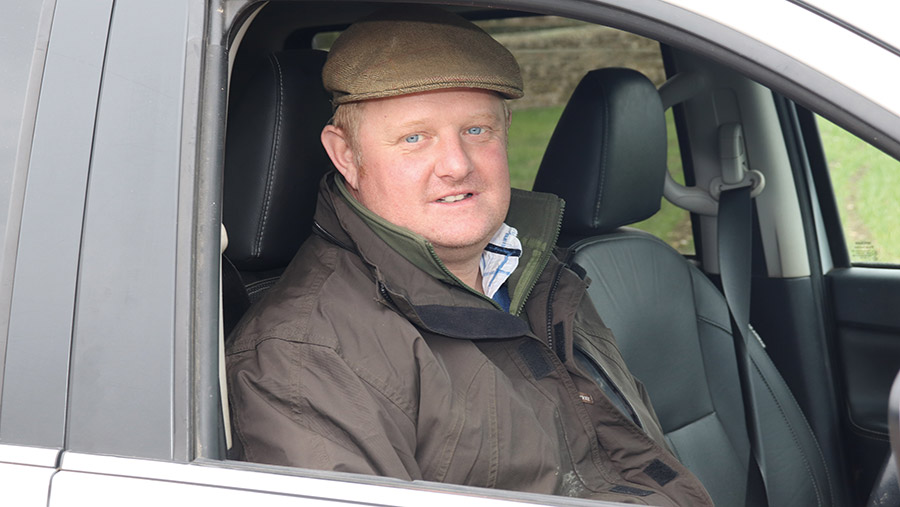
Giles Porter © Andrew Faulkner
The key thing is to do the job well, operate cost effectively and have a good group of people in place to carry out the work to a high standard.
We currently have a great team, which also makes the job fun.
The main change here over the past 20 years has been the switch from conventional crop establishment to no-till — from ploughing, power harrowing and drilling to direct-seeding.
Without this change we wouldn’t have been able to increase the size of the business in the way we have. And we’re ambitious to take on more.
How brand loyal are you?
We run John Deere tractors, but that’s largely for the GreenStar precision farming technology.
In the past we’ve used Solsteer conversion kits for operating GreenStar on other brands – for example, we had it on a New Holland T7.315 tractor, and we’re also now looking at a demo Fendt 724 – but we’ve tended to end up back with Deere, largely because of familiarity.
As for other kit, we’ve owned Horsch drills since 2001. However, when it came to the last change, Horsch didn’t have anything that suited our ground and what we were trying to achieve.
So, we went for an Amazone Condor after trying a Dale.
Each machine choice is made in isolation — the best machine for the job at the time, irrespective of colour.
Favourite dealer?
Mike Garwood for Case IH, Hunts for Deere, Haynes for New Holland, and Crawfords for Amazone. They’re all good, and we don’t have issues with any of them.
Other than daily servicing and maintenance, we’re not equipped to carry out major repairs, so we rely on decent dealer back-up.
Favourite piece of kit?
Probably the 15m Amazone Condor drill, which we bought ahead of spring 2020.
Even though we only travel at 6-7kph, we’re still drilling 60ha/day, and we do nothing ahead of it. At that speed, we’re not shaking the machine to bits, either.
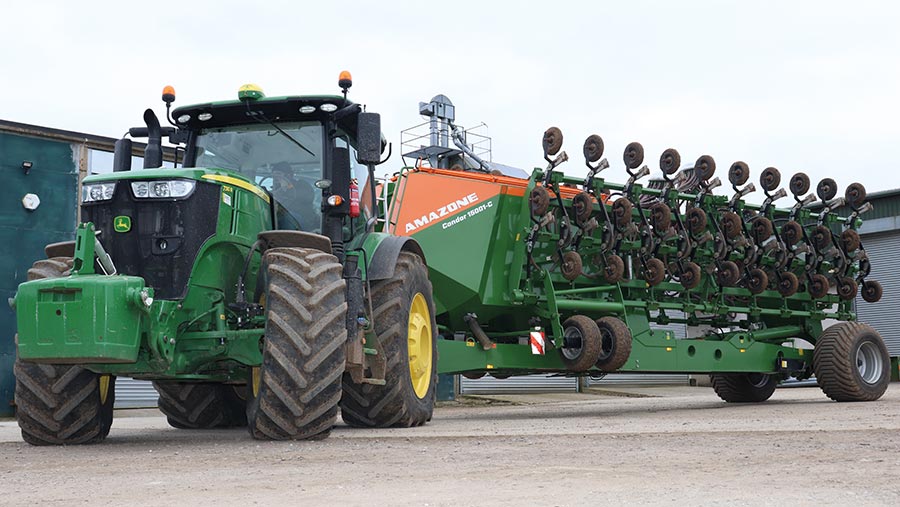
Amazone Condor drill © Andrew Faulkner
Also, the drill is refreshingly simple in both its design and operation. There aren’t loads of bearings and things to go wrong.
Least favourite piece of kit?
Polar opposite to the Amazone Condor, our 4m John Deere 750A disc drill is a right fiddle to set up and doesn’t suit our flinty ground. It wears quickly, rattles and shakes.
Every two or three years we have to replace discs, bearings, adjusters and other wearing parts at a cost of about £20,000-plus. Per hectare drilled, it’s expensive.
We put up with the 750’s downsides because it’s still effective for direct-drilling smaller environmental plots and coping with taller cover crops, where the big tined drill can struggle.
Latest purchase?
An Amazone ZA-TS 4200 fertiliser spreader. We’re mainly on liquid fert, but we wanted to take some workload pressure off the sprayers.
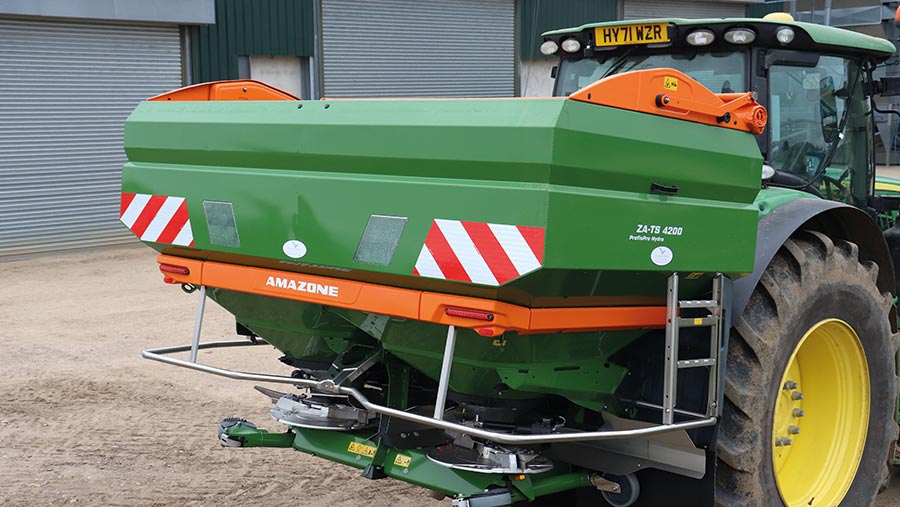
Amazone ZA-TS 4200 fertiliser spreader © Andrew Faulkner
This year we were also able to buy solid urea and polysulphate more competitively than the liquid equivalent.
At £23,000, the spreader isn’t a massive investment, and, with good loader back-up, we’ve been surprised by how much you can spread in a day.
Oldest machine still at work?
A couple of 30-year-old McConnel Shakaerators – a seven-leg and a nine-leg – are still called on for some strategic soil loosening, and a 1948 Fergie trailer stores our shoot feed.

McConnel Shakaerator © Andrew Faulkner
The mid-1800s shepherd’s hut possibly over-stretches your “machine at work” definition.
How long do you keep your machines?
There’s no fixed policy; it’s more on need and cost. Do we need something bigger, or is an existing item costing too much to run? We don’t have a rigid capital budget.
On tractors, for example, the plan is to run the 19-plate and 20-plate 7310Rs for 10 years, whereas the previous New Holland T7.315 we only kept for three.
We bought the T7, as the operator at the time chose it, but, by the end of year three, even he didn’t like it. No-one found it comfortable.
Combines are the current dilemma. We were aiming to go for decent, low-hour second-hand models, though these haven’t been easy to find, so again it’s a flexible policy.
The New Holland CR9.90 was bought new for harvest 2022, as there wasn’t much of a saving on used – we paid about £360,000, a price that’s since gone up about 30% – whereas our latest purchase for harvest 2023, a Claas 760 TT, had already done four seasons before coming here.
We also run a Case IH Axial-Flow 9240, so the future debate will be whether we can cut back from our existing three harvesters to two while still protecting crop quality. We’ll see how this harvest goes and make a decision.
Next on your wish list?
Owning a third tractor. We may end up simply buying the existing 6175R, which is currently on long-term hire from MP Hire. We also use MP for the short-term 6155s at harvest time.
Biggest machinery mistake?
Perhaps not mistakes, but in the past we’ve suffered a few embarrassing lost-wheel incidents.
We operated a Matrot sprayer with a 42m front boom for a couple of years, and its wheels had a nasty habit of dropping off.
Not quite the same, but we then had a Berthoud trailer sprayer whose wheels went out of centre, causing the machine to flip over.
Most expensive repair bill?
Nothing stands out, although the 750A drill is consistently our most expensive machine to maintain and repair. Discs just don’t suit some of our soils.
Priciest spare part?
The ex-demo Agrifac sprayer was just out of warranty when an electrohydraulic control unit went. The £3,500 bill for the part was a nasty surprise.
Best invention?
We’re not really into making and modifying. With just three full-time people on more than 1,600ha, they’re pretty much flat out getting the arable work done.
What couldn’t you live without in the farm workshop?
A log burner gets the staff vote. Everyone also has their own cordless Makita angle grinder, which is a much quicker option for in-field repairs than a hacksaw.
Favourite and least favourite jobs?
Out crop inspecting on the quad bike in the first warm days of spring. That would be near the top of my favourites list. And combining when I get the opportunity.
In fact, there are very few jobs I don’t enjoy…with the exception of cleaning down the grain store.
What’s your everyday farm transport?
A 67-plate Nissan Navara doublecab, which I love. It was bought at three years old with less than 30,000 miles on the clock for £22,000, and I’ve since added another 20,000 miles. Fuel use is about 20-25mpg.
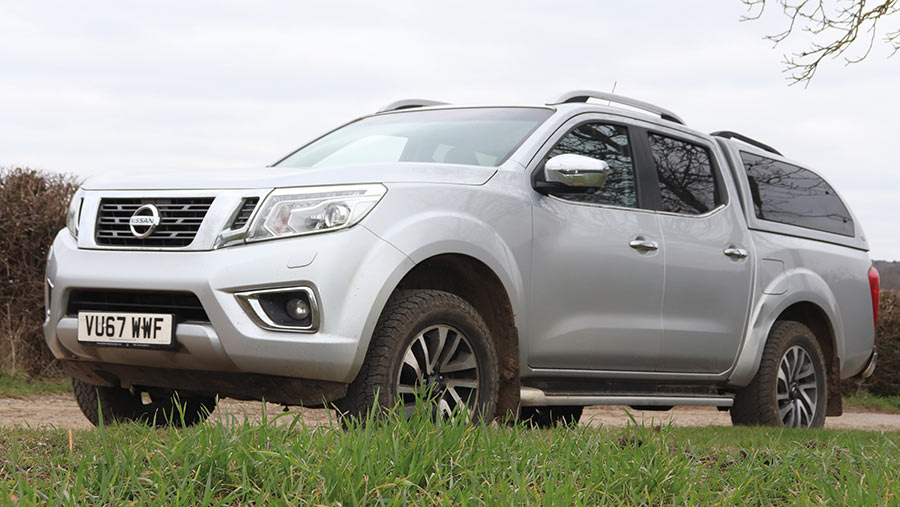
Nissan Navara pickup © Andrew Faulkner
The vehicle takes a bit of a beating, but has been largely problem-free.
It’s my third Navara, but, now that Nissan has dropped out of the market, I don’t know what I’ll do next. I won’t be comfortable spending £35,000-plus on a new farm truck, though.
Best tractor you’ve had?
We had a Fendt 828 that everyone loved driving, but we’ve never had another. I’m not convinced that the resale value sufficiently offset the higher purchase price.
Worst tractor you’ve had?
Either the New Holland T7 or an older Claas Atles. Neither were particularly bad, but nobody liked driving them.
For us, Deere tractors are still the benchmark. We’re used to them.
Biggest machinery bargain?
Perhaps an odd choice, but I reckon it’s the 15m Amazone Condor drill.
Its no-till capability and high output have transformed the way we farm, and, after deducting the £25,000 FETF grant, it cost us about £75,000 in 2021.
Today, the same drill would cost at least another £30,000.
Another contender is the eight-year-old Axial Flow 9240 combine. It had been the dealer’s standby harvester, which we then hired for a year before buying it for just £160,000 in 2019.
We’ve still got the machine and, overall, it’s been pretty reliable — just a few bearings, but nothing too major.
Kit list
- Tractors: JD 7310R x2, JD 6175R long-term hire and three JD 6155R short-term hire (10-12 weeks in the summer)
- Combines: New Holland CR9.90 (10.67m header), Case IH Axial Flow 9240 (10.67m header), Claas Lexion 760 TT (7.62m header)
- Sprayers: Agrifac Condor self-propelled (36m/5,000-litre), Horsch LT trailed (36m/5,000-litre)
- Telehandlers: JCB Loadall 541-70, JCB Loadall 536-70
- Drills: Amazone Condor 15001-C (15m), Horsch Sprinter (6m), John Deere 750A (4m)
- Cultivation kit: Horsch Terrano FG (8m), Cousins rolls (12m), Dalbo rolls (12m), McConnel Shakaerator x2
- Fertiliser spreader: Amazone ZA-TS 4200 ProfisPro Hydro
- Other kit: 16,000-litre fert/water bowser, 18t Richard Western grain trailer, hired 16t Stewart grain trailers x3
